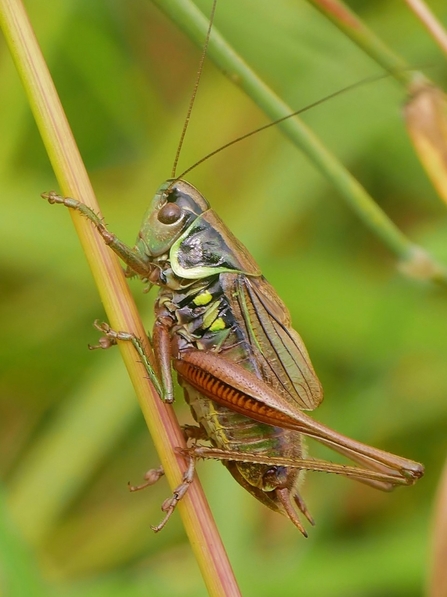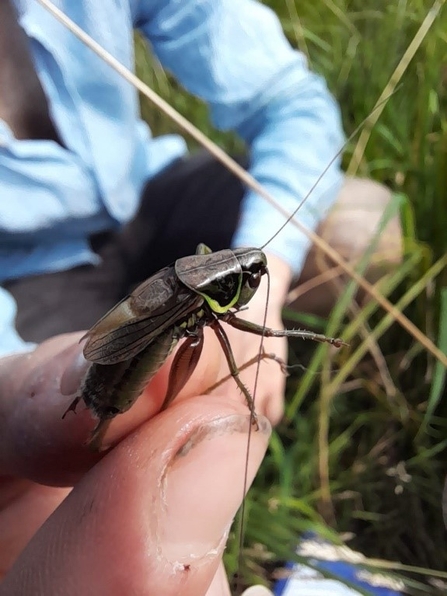The Roesel’s bush cricket was discovered during a grassland management survey conducted by Kingfisher Trail Trainee, Jane Godfrey, in a project funded through the Government’s Green Recovery Challenge Fund.
Rare to the North, this is the first record of its kind for Seven Acres, a Local Nature Reserve along the Kingfisher Trail in Bolton. The record was later confirmed by John Anderson, AKA ‘Mr Seven Acres’, a local enthusiast who keeps records of all flora and fauna in the park, dating back decades.
The most interesting thing about this find is that until the early 20th Century, Roesel’s bush cricket, Roeseliana roeselii, was only found on the South-East coast of the UK. Since that time, it has expanded its range in response to climate change - whereas originally the cricket was only found on salt marshes and dunes, it can now be spotted in urban wasteland, coarse grassland and marshy areas.
Alun Morris, Friends of Seven Acres said: "The Friends of Seven Acres and their volunteers, the Seven Acres Squad, meet twice weekly to carry out tasks on Seven Acres. The tasks are focused on conservation, ecology and safe site access as the Seven Acres has become increasingly popular with families, walkers, horse riders and cyclists. We aim to carry out tasks using traditional carbon-neutral techniques while protecting habitats and biodiversity as a response to climate change and to meet the objectives of the Bolton Climate Change Strategy. The group work with support from and in partnership with The Lancashire Wildlife Trust to ensure effective co-ordination of tasks and to maximise available resources."


